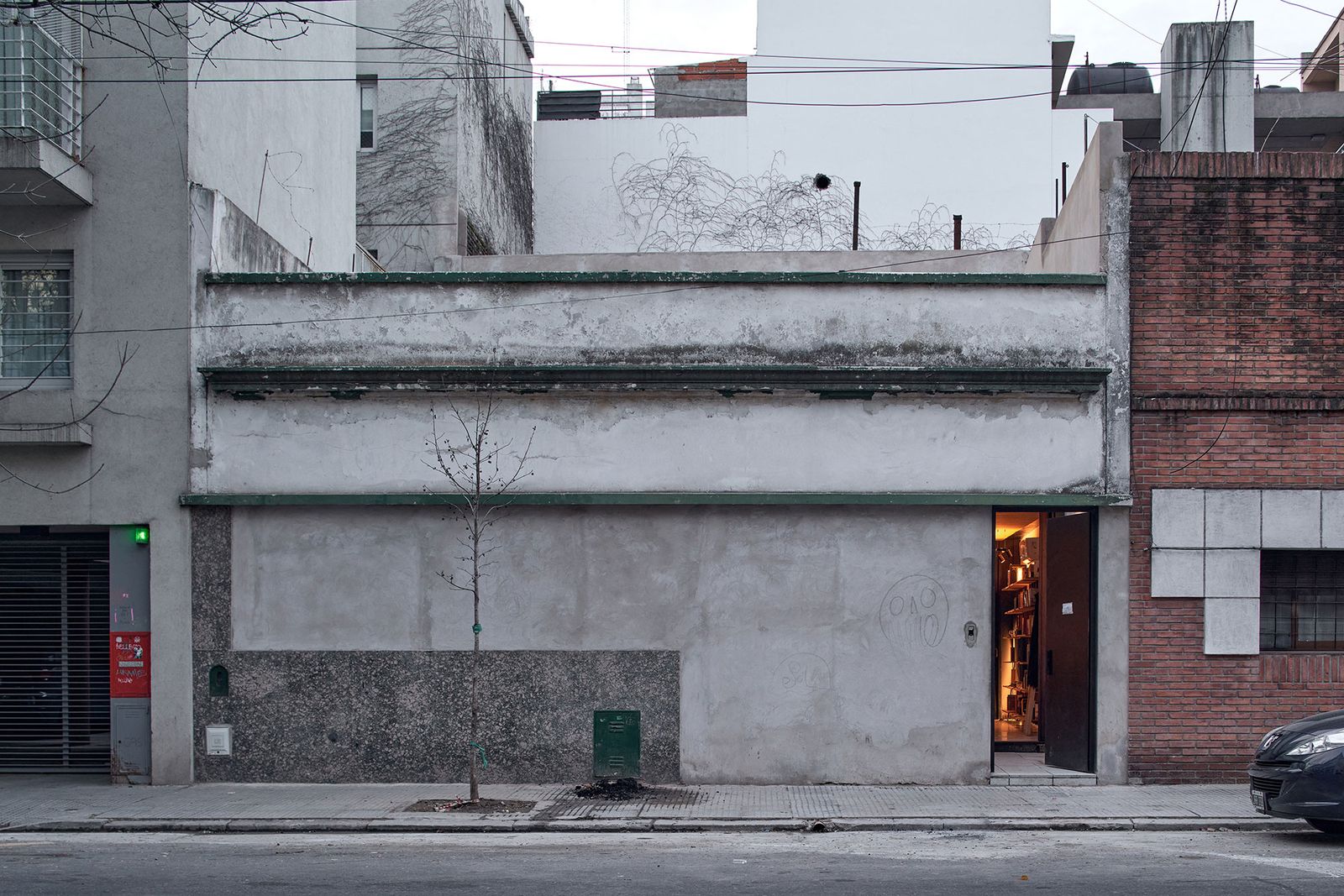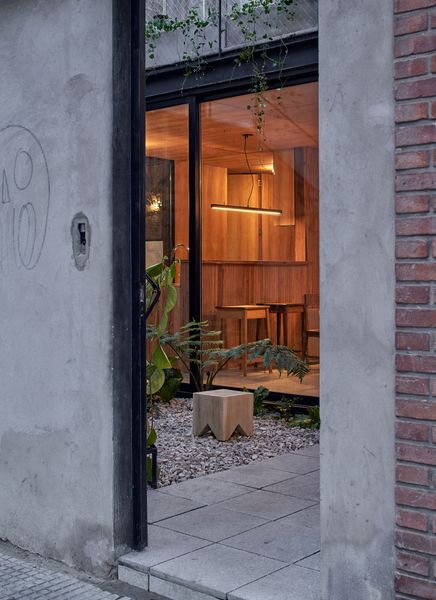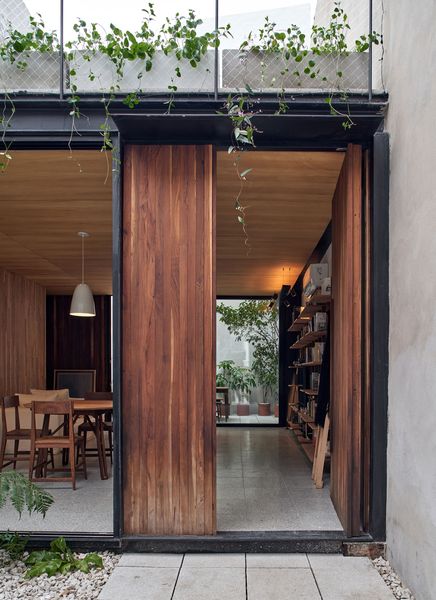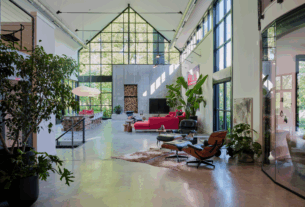Half modular, half traditionally built, the 775-square-foot plan figures in three patios and a terrace that give its owner a surprising sense of remove from the city.

On one quiet street in Barracas in Buenos Aires, a neighborhood characterized by old-school stores and bazaars, stands an unmarked gray wall. It’s the last vestige of a home that once was: a modest single-story dwelling from the 1940s demolished to make way for another. The new home is a collaboration between architecture firm La Base and modular construction company Place, led by Leandro Seoane. Seoane, who lives in an adjacent building, wanted to create a home for his mother, Elena.

In Buenos Aires, architecture firm La Base partnered with modular builder Place on a small home that’s half modular, half traditionally built.
Photo: Cristóbal Palma
Joining forces with Seoane was one of the fortuitous things to come out of the pandemic for La Base founders Teresa Sarmiento and Nicolás Tovo, as they searched for faster and more efficient ways to build. Five years later they now have an impressive roster of projects under their belt, including an entirely modular project in Bariloche, previously published by Dwell.
“We started to think about how we could combine our strengths—our architectural expertise with their modular construction experience—to make architectural products using the kind of architecture we’d already been doing for twenty years,” says Sarmiento. The materials and language La Base uses, including metal, wood, and slender structural elements, were a natural fit with modular construction, she adds. “Today, around eighty or ninety percent of our projects are modular.”
Elena wanted a one-level home, feeling it would suit her best at this later stage in life in terms of comfort and affordability. The challenge for La Base—which the studio put on itself to achieve as high-quality of a home as possible while saving on costs—was producing a 775-square-foot plan that was half modular, half traditionally built, with the two parts joined seamlessly. They also wanted to merge indoor and outdoor spaces while offering privacy in a dense urban setting, a hallmark of the firm’s work.

The residence has a courtyard at the entry, where an iron stair leads to a terrace.
Photo: Cristóbal Palma

Across the entry courtyard and through a lapacho wood door is the living space, which was constructed using traditional methods.
Photo: Cristóbal Palma
See the full story on Dwell.com: A Sanctuary of a Home Hides Behind This Gray Wall in the Middle of Buenos Aires
Related stories:


